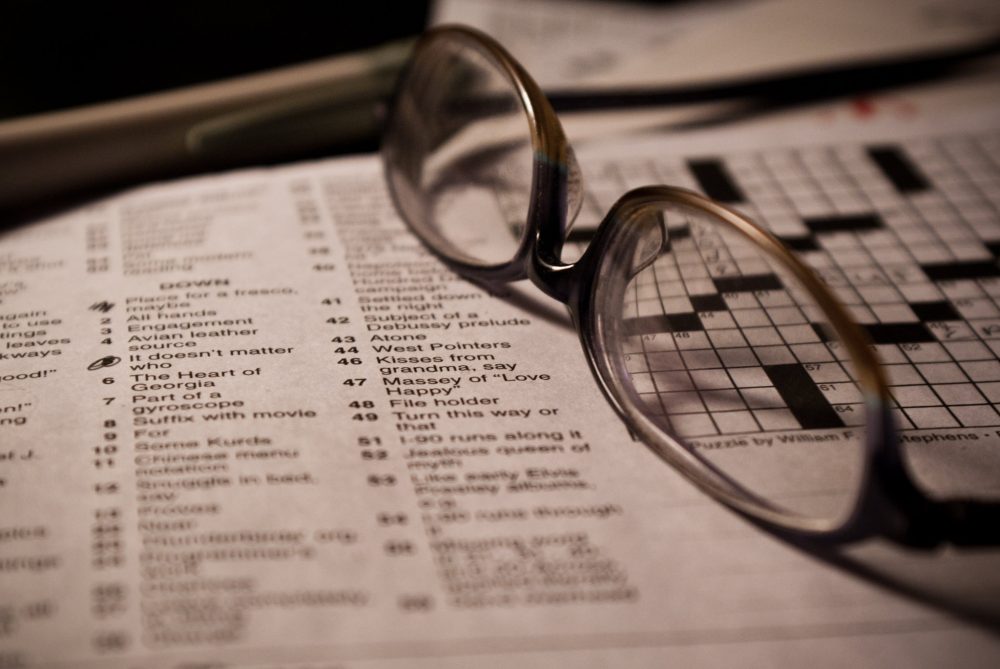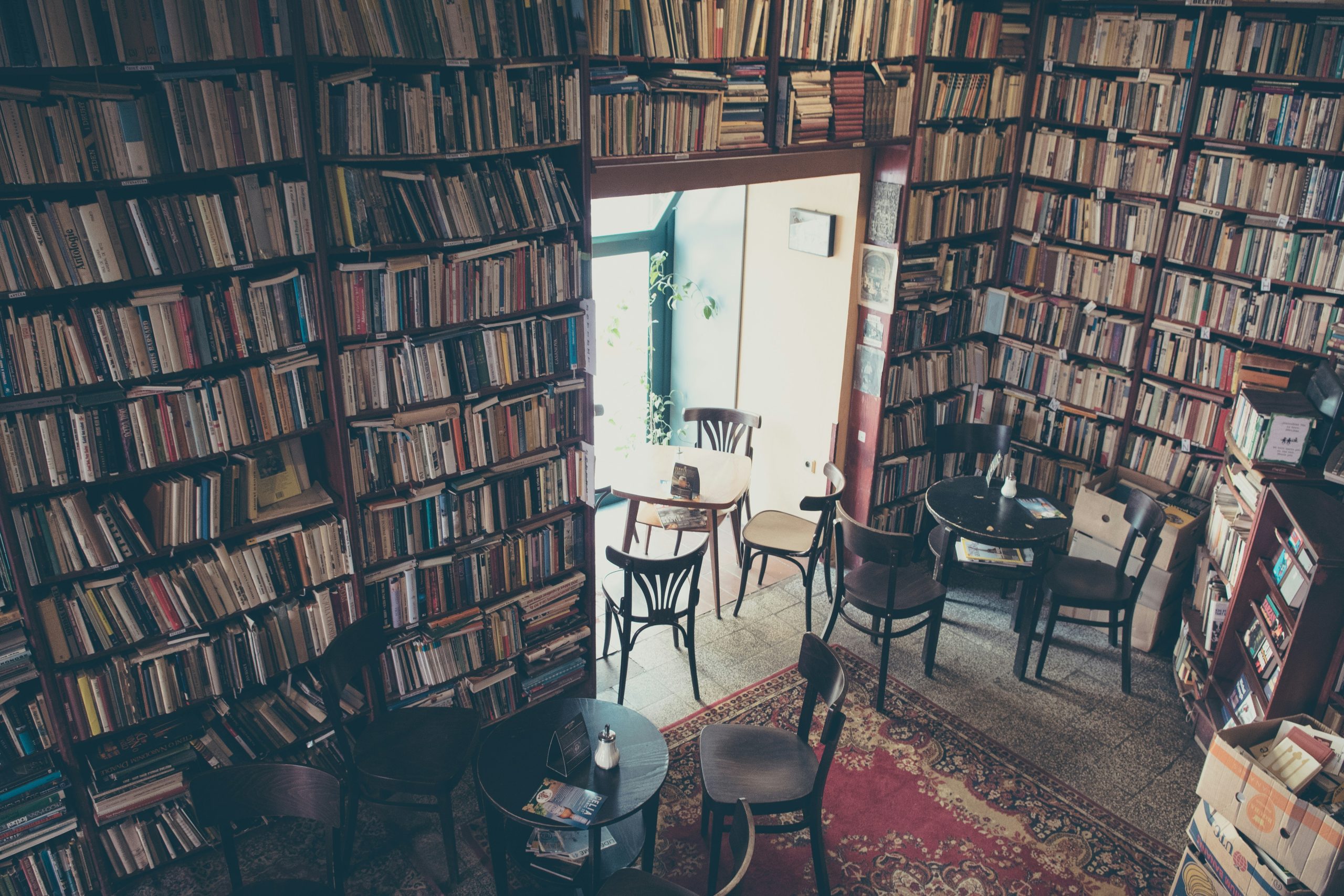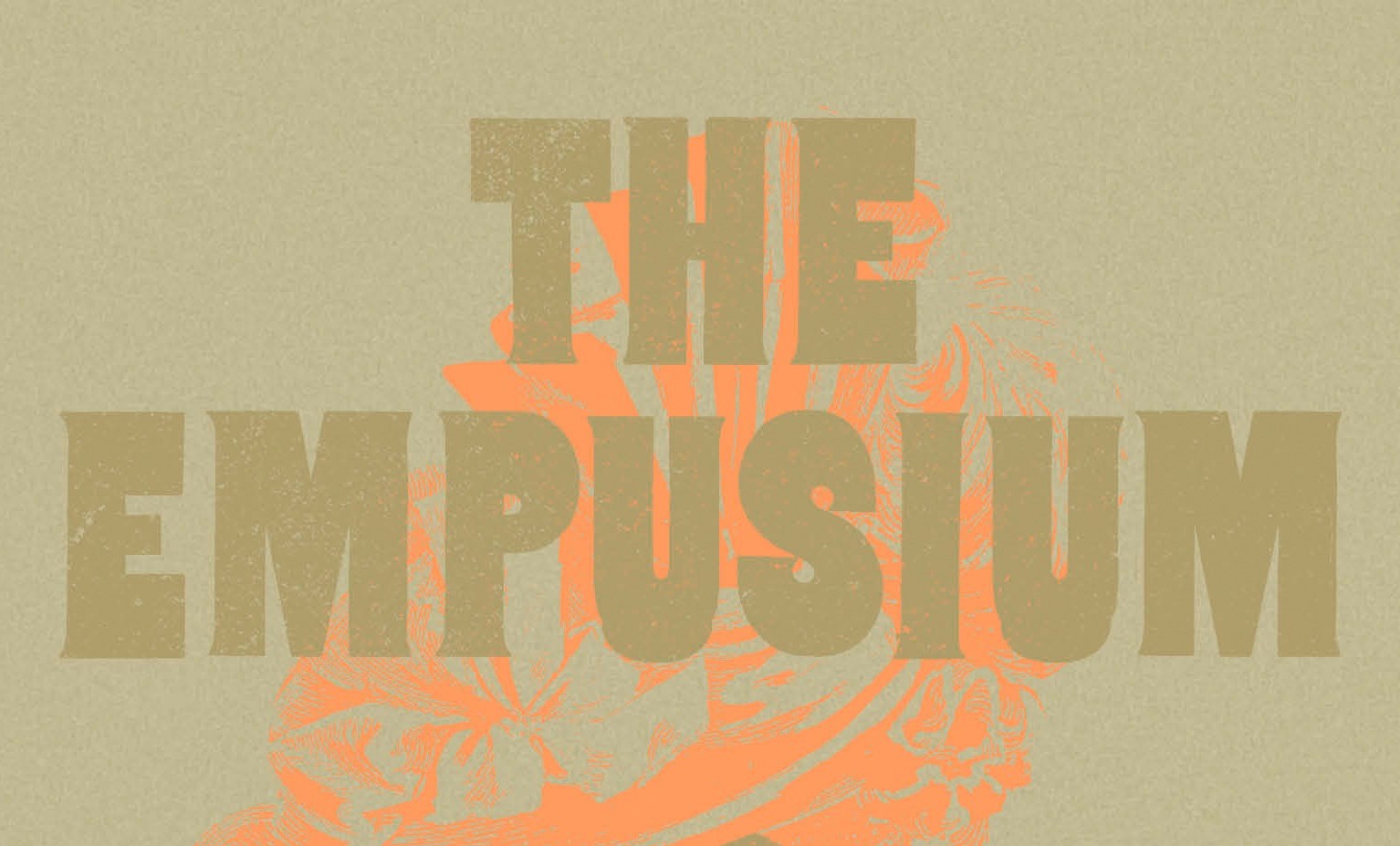Books & Culture
Literary Translations and Crossword Puzzles Are More Similar Than You Think
My work as a translator and my hobby as a puzzle-maker share an understanding of language as a space for play

My journey as a literary translator began three years ago, whereas I only started constructing crosswords in the early months of quarantine. But it didn’t take me long to discover that literary translation and crossword construction share many qualities. Both are puzzles with particular rules and constraints: translators move the meaning and culture of a text from one language into another, and cruciverbalists populate grids with words that translate into a set of clues. When I translate poems and construct crosswords, I often find myself asking the same questions: What does this word mean? Will others understand? And, of course, how can I have fun with this?
While working on translations and crosswords concurrently, I have thought a lot about how the two crafts illuminate the complexity of language and the joys of wordplay. The process of creating these puzzles is enlightening, self-referential, and playful. They thrive by challenging the boundaries of what we know and don’t know. And perhaps the most rewarding lesson I’ve learned from them is that art creates community. As much as working on translations and crosswords can feel like a solitary task, it is thanks to these puzzles that I’ve watched my world expand, even as I now spend all of my time at home.
David Bellos argues that the question we should ask about translation is not what it is, but what it does. The same can be said for crosswords. And what these puzzles do so well is uncover the multiple meanings of a word and the richness of language. When I translate a Chinese word into English, I have to choose between different synonyms and consider which word would best reflect the effect of the original text. The word 繁殖 (fán zhí) may be “breed” or “multiply,” for example, but “breed” may be more appropriate if I want a one-syllable word, while “multiply” may work better if I want a word that isn’t as strongly associated with biology. A similar train of thought follows me when I write crossword clues. SWING can be clued as “playground fixture” or “music from the 1920s,” but the playground clue may be more fitting if SEESAW also appears in the puzzle, while the music clue may ultimately be my preferred option since I, the constructor, like swing dancing. Both crosswords and translations encourage me to consider the universal and personal layers of meaning tucked away in a single word.
Both crosswords and translations encourage me to consider the universal and personal layers of meaning tucked away in a single word.
It is because of this multiplicity that we often see the same words clued differently across various crosswords or encounter new translations of the same text. One word can inspire many meanings, just as one text can spawn varying interpretations. On wordplays.com, a website aptly named, you can even search up the different clues that have been used for the same word. For instance:
- Fleetwood ___, rock group
- Big ___ (burger)
- It has no Windows?
It may be obvious from the first, second, or third clue that their common denominator is MAC. Is it necessary to debate over which clue is better? It seems strange to apply the notion of superiority here, since the experience of playing crosswords can be so subjective. A Fleetwood Mac fan would like the first clue, while a McDonalds regular may prefer the second. But no clue is inherently “better” than the others (although the third may get extra points for being a pun). After all, how a word is defined does not only depend on its dictionary definition—it also depends on how you want to define it.
Just as one word can be clued in a myriad of ways, it is valuable to have different translations of the same text. Different readers have different takeaways from the same book, so it makes sense that no two translations are identical. There are around 60 translations of Homer’s Odyssey, and Emily Wilson made headlines in 2017 for becoming the first woman to translate the epic into English. Much has been written about her take on the opening line, “Tell me about a complicated man,” which differs from the translations offered by predecessors such as Robert Fagles in 1996 (“Sing to me of the man, Muse”). In an interview with Vox, Wilson explains that she described Odysseus in plainer terms to challenge the idea that Homer has to sound “heroic and ancient.” Throughout her translation, she pays close attention to minor characters and refuses to gloss over the epic’s references to slavery. As such, Wilson’s translation has been praised for the ways in which it invites contemporary readers to think about how the Odyssey resonates with society today.
Crosswords and translations tell us about a word’s relationship with the world around it over time.
How a translator approached a text in 1996 will differ from how a translator interprets the same text in 2021, just as how the most common clue for a word today may differ from how a constructor would have clued it two decades ago (contemporary clues for ELSA, for example, almost always reference Frozen). Like textual time capsules that track our ever-evolving relationship with language, crosswords and translations tell us about a word’s relationship with the world around it over time.
Although translations and crosswords can feel like intimately personal projects, however, they eventually face an audience. Both the translator and crossword constructor must ask themselves: will my reader or player understand? When making crosswords, I want clues and answers that will make sense to the player, just as when translating, I want to produce a translation that my target readers can access. This means that my clues should correspond to my crossword fill (which ideally shouldn’t be too obscure, unless I am making a cryptic crossword), and my translation should bring as much of the source language into the target language as possible. Of course, all this is easier said than done, and these challenges are often laid bare on the page for strangers to see.
Translators are sometimes criticized for “translatorese,” a term used to describe translations that don’t read fluently in English because they render the original language too literally. But for many translators, being told that their translation reads as if it were “originally written in English” may not be the highest compliment. When I translate the term 茶餐廳, I do not opt for “diner” or “tea restaurant.” Instead, I leave it in its transliterated form, cha chaan teng, which is so quintessentially Hong Kong that I doubt an English name would work as well. The rest of my translation should capture the feeling of the place—which, more so than its name, is what defines a cha chaan teng. I want my readers to know that what I present to them is a translation—not an original English text—even if it means that they might encounter something unfamiliar as they read.
Similarly, when constructing and playing crosswords, it is common to encounter words we don’t often use in everyday life. There aren’t many three letter words that begin and end with “O,” which is why ONO (as in Yoko Ono) shows up in many crosswords. So do directions, such as NNE (North by East) and Latin words (ETTU, as in Et tu, Brute). “Crosswordese” has become its own language, and the best solvers are intimately familiar with its lexicon. Yet crosswordese is sometimes frowned upon because it suggests that the constructor has a hit a dead end when filling in their grid and has resorted to using unoriginal words to pull their puzzle together.
The task of the translator and cruciverbalist is to choose the words we want to see in the world.
In my crosswords, I do try to avoid crosswordese, just as I try to avoid translatorese in my translations. But when I play crosswords or read translations, it is precisely when I stumble across new or foreign words that I remember I am engaging with a medium in which meeting the unfamiliar is part of the package. In fact, coming across words you don’t know in a translation or crossword is what makes both such excellent learning resources. Lately, both translation and crossword worlds have seen a rise in discussions about how to create more inclusivity in their communities. These conversations are not only about who gets published, but what gets published, and how. Many translators advocate for retaining non-English words in their translations without having to italicize them to signal “foreignness,” or “otherize” them for an English readership. Many constructors are championing efforts to reference more women and people of color in their puzzles, avoiding clues that have traditionally catered to a white and male audience. Platforms with high visibility and significant resources, such as the New York Times crossword or Poetry Magazine, have a responsibility to spotlight underrepresented voices and listen to them as well. The idea that reading makes one more empathetic or educated will only remain a platitude unless publishers take concrete steps to ensure that more diverse voices are being heard. The task of the translator and cruciverbalist is to choose the words we want to see in the world; we hope that editors can meet us there, too.
I would be remiss if I didn’t mention technology in this essay, for I sometimes wonder whether my work as a translator or constructor would be possible without it. For instance, a telltale sign that I’m working on a translation or crossword is the millions of tabs that I have open on my laptop. While translating, I’ve had to embark on rigorous Google searches to learn about sustainable fishing practices, the names of various trees, and Hong Kong’s complicated relationship with chickens. When I construct crosswords, I often look up words to consider their various definitions or verify whether they are words at all. Thanks to technology, resources such as online dictionaries, thesauruses, and the OneLook search engine make it easier for me to find the words I need. They also help me think more deeply about how to define a word, which is at the heart of translating and clue-writing.
At the same time, I have learned that it’s crucial to take a step back from Google and focus on my instincts. As useful as dictionaries are, searching up endless synonyms for “vault” didn’t help me translate a line about the sound of chopsticks returning to their container; it wasn’t the shape of the vessel that was important, but rather the “clang” of the utensils. Similarly, looking up whether IWIN is an acronym (“Interactive Weather Information Network”) once stalled me from realizing that IWIN can also be interpreted as “I win,” a “victor’s cry.” As much as translation and crosswords ask us to play by the rulebook, they also encourage us to go rogue and have fun. After all, the most delightful element of a crossword is a clever theme that incorporates wordplay, or a chaotic clue that defies our expectations of how a word should be clued (Paolo Pasco’s “Cookie sometimes dunked in orange juice (4)” may be the most-talked-about clue of 2020. The answer is OREO).
As much as translation and crosswords ask us to play by the rulebook, they also encourage us to go rogue and have fun.
The internet does a thorough, albeit biased, job of showing us how a word has been clued or translated in the past. Yet while search engines are crucial tools for translators and cruciverbalists, it’s often by thinking outside of the (search) box that we get to the playful heart of these puzzles. There are many established ideas about what a crossword should look like, for example, and a quick Google search will show you that rotational symmetry has long been an important component of American-style crosswords. As such, it’s refreshing to see how (and why) constructors break this mold. The black squares in Soleil Saint-Cyr and Ross Trudeau’s “Wakanda Forever,” published on Rossword Puzzles, form a heart, a fitting shape for a tribute puzzle to the late Chadwick Boseman. In Elizabeth C. Gorski’s New York Times puzzle from October 18, 2009, the black squares form a spiral shape that alludes to the puzzle’s theme: the Guggenheim Museum, famous for its iconic spiral staircase.
Then there’s Kameron Austin Collins’ May 14, 2015 puzzle, also published in the New York Times, which asks its solvers to also think outside the grid. The answer to 1-across, “Flag position,” is HALFMAST, but only LFMAST appears inside the grid. 13-down, “Idyllic, like a past time,” is HALYCON, but the grid can only accommodate LYCON. In both instances, HA appears outside the grid. The words of the puzzle, as its revealer suggests, literally “burst out laughing.”
Breaking rules is an essential part of experimental translation, too. Brice Matthieussent’s Revenge of the Translator, translated from the French by Emma Ramadan, is narrated by a translator (“Trad”) who eventually enters the text he translates. Toward the end of the novel, Ramadan has the opportunity to step into the novel herself—and she does, inserting herself into the narrative just as Trad did. As Arshy Azizi writes in LARB, “perhaps Ramadan’s translation is her own form of revenge against a discourse that, riddled with sexism, has little concern for not only the female writer but the female reader, as well.”
In 2011, five years before she would go on to win a PEN Award for her translations of Sagawa Chika’s poetry, Sawako Nakayasu published Mouth: Eats Color, a collection of “Translations, Anti-Translations, and Originals” that reimagine ten of Sagawa’s poems. The book experiments freely with multilingualism, includes multiple translations of the same text, and challenges preconceived notions about what a translation should look like. Even the publication of the book was unconventional; Nakayasu published it herself through the aptly-named “Rogue Factorial Press.”
By transgressing in translation, Ramadan and Nakayasu both went “rogue” to produce translations that expand the possibilities of literary translation itself. Despite all the rules that dictate how one should construct a crossword or translate a text, it’s often by going against the grain that we tap into the creative wellspring at the heart of these crafts.
Crosswords, translations, and other puzzles push you to make the best of a confined space by exploring the limitless options within limited boundaries. At age six, I experienced my first lockdown in Hong Kong when schools shut down during the 2003 SARS outbreak. I don’t remember much about the epidemic itself but have fond memories of piecing together jigsaw puzzles and making crafts with my mom at home. So perhaps it is only fitting that I started constructing crosswords during this quarantine while wondering how to live fully as my radius of daily activities began to shrink.
Crosswords, translations, and other puzzles push you to make the best of a confined space by exploring the limitless options within limited boundaries.
Playing with words through crosswords and translation has become my favorite way to spend my time, especially because I know that I am not alone when I translate or construct. Last June, my husband Kevin and I started a website called Crossworthy for publishing original crosswords. We send out a 15×15 puzzle every Sunday to a group of subscribers, mostly friends and family, and often bounce ideas off of fellow constructors on Twitter. Moreover, while translators often work independently, I treasure moments where I get to share work with fellow translators, learn from their expertise, and mull over translation problems together. When I chat with the writers I translate, who live on the other side of the world, I’m reminded that translation—even in times of quarantine—does not happen alone. Rather, it cannot exist without collaboration.
Translation and crosswords have much in common, even after they are published and in the hands of critics. Just as translations are sometimes unfairly reviewed on the basis of a single word, crosswords can sometimes be picked apart by players who disliked a single word or clue. But many people also give these puzzles generous time and attention—there are blogs dedicated to reviewing crosswords, journals that exclusively spotlight works of translation, and groups set up to support emerging translators and constructors. People from around the world gather annually, in-person and virtually, for translation conferences and crossword tournaments. When I work on translations and crosswords, I know that I am part of something larger—a community of people who love to spend time with words. At a time when the world can appear indecipherable, I find solace in searching for the right words, imagining possibilities within constraints, and creating works of art to send into the world.









